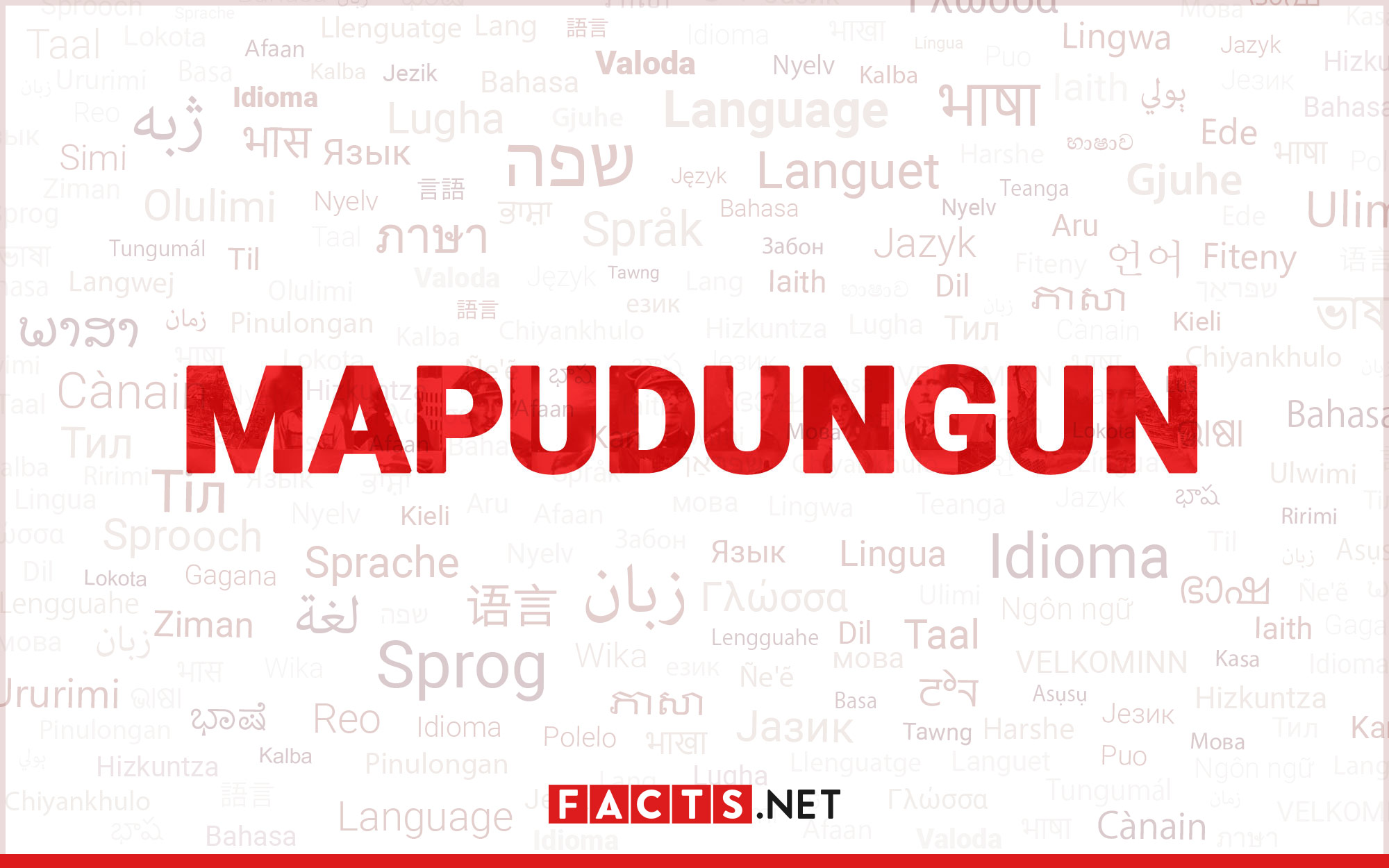
Mapudungun is a fascinating and rich indigenous language spoken by the Mapuche people in Chile and Argentina. This unique language has deep historical and cultural significance, and is considered one of the few indigenous languages in the Americas that is still widely spoken today. In this article, we will explore 15 captivating facts about Mapudungun that shed light on its linguistic features, cultural importance, and ongoing efforts to preserve and revitalize the language. From its complex grammar and fascinating phonetics to its connection with nature and spirituality, Mapudungun offers a glimpse into the rich cultural heritage of the Mapuche people. So, let’s embark on this linguistic journey and discover the wonders of Mapudungun!
Key Takeaways:
- Mapudungun, the language of the Mapuche people, reflects their deep connection to nature and cultural heritage, making it a fascinating language to study and preserve.
- Efforts to revitalize Mapudungun are crucial for preserving the rich oral tradition and cultural identity of the Mapuche people, fostering greater cultural understanding and appreciation.
Mapudungun is an indigenous language spoken in Chile and Argentina.
Mapudungun, also known as Mapuche, is the language of the Mapuche people, who are native to south-central Chile and southwestern Argentina. It is one of the oldest indigenous languages in the region.
The name “Mapudungun” translates to “the language of the land.”
The term “Mapudungun” itself reflects the close connection between the Mapuche people and their ancestral territory. The language encompasses the rich cultural heritage and deep ties the Mapuche have with their environment.
Mapudungun is a highly complex language with intricate grammar.
Mapudungun features a complex grammatical structure, involving verb conjugations, noun declensions, and a unique system of pronouns. It is known for its precise and nuanced way of expressing ideas, making it a fascinating language to study.
There are various dialects of Mapudungun.
Mapudungun is not a uniform language but rather a collection of dialects spoken by different Mapuche communities. Some of the main dialects include Mapuche Huilliche, Mapuche Pewenche, and Mapuche Pehuenche.
Mapudungun words are often influenced by nature.
Mapuche culture has a deep appreciation for nature, and this is reflected in their language. Many Mapudungun words are derived from natural elements such as plants, animals, and geographic features.
Mapudungun has been recognized as an official language in certain areas of Chile.
In some regions of Chile, Mapudungun has been officially recognized as a national language alongside Spanish. This recognition aims to preserve and promote the cultural heritage of the Mapuche people.
The Mapuche have a rich oral tradition passed down through Mapudungun.
Mapudungun has long been the language used to preserve and transmit traditional Mapuche stories, myths, and histories. It plays a crucial role in maintaining the Mapuche cultural identity and passing it on to future generations.
Efforts are being made to revitalize and promote the use of Mapudungun.
Recognizing the importance of language revitalization, initiatives are underway to encourage the use of Mapudungun among Mapuche communities. Schools, cultural centers, and language programs are actively promoting the teaching and usage of Mapudungun.
Mapudungun has contributed words to the Spanish language.
Due to the historical contact between the Mapuche people and Spanish-speaking populations, some Mapudungun words have made their way into the Spanish language. Examples include “guata” (belly) and “cancha” (field).
The Mapuche language is not only spoken but also sung.
Music plays a significant role in Mapuche culture, and Mapudungun is often sung in traditional songs and ceremonies. This unique form of expression adds to the beauty and richness of the language.
The Mapuche flag features Mapudungun words.
The national flag of the Mapuche people, known as the Wenufoye, incorporates Mapudungun words and symbols. It is a powerful representation of the Mapuche cultural identity and their ongoing struggle for recognition and rights.
Mapudungun is a key element in Mapuche resistance movements.
The Mapuche people have long fought for their rights and land preservation. Mapudungun plays a vital role in their resistance movements, serving as a tool for communication, organizing, and asserting their cultural and territorial claims.
Mapudungun is recognized as an endangered language.
Like many indigenous languages around the world, Mapudungun faces the threat of extinction. Efforts to reclaim, revitalize, and preserve the language are essential to ensure its survival for future generations.
Learning Mapudungun can foster cultural understanding and appreciation.
Exploring Mapudungun and its rich cultural context can provide valuable insights into the history, traditions, and worldview of the Mapuche people. It can contribute to greater cultural understanding, appreciation, and respect.
Mapudungun signifies the resilience and strength of the Mapuche people.
The continued use and preservation of Mapudungun in spite of historical challenges is a testament to the resilience and determination of the Mapuche people. It symbolizes their enduring spirit and their commitment to preserving their cultural identity.
Conclusion
In conclusion, Mapudungun is a fascinating and unique language that holds a rich cultural and historical significance for the Mapuche people of Chile and Argentina. From its complex phonetics and grammar to its connection with nature and spirituality, Mapudungun is a language that continues to evolve and thrive despite the challenges it has faced throughout history.
Learning about Mapudungun not only allows us to appreciate the linguistic diversity of our world, but it also provides us with a deeper understanding of the Mapuche culture and their profound connection to their ancestral land. By preserving and promoting Mapudungun, we can help ensure the vitality of this ancient language for future generations.
So next time you come across the name Mapudungun, remember these captivating facts and take a moment to appreciate the beauty and significance of this unique language.
FAQs
1. What is Mapudungun?
Mapudungun is an indigenous language spoken by the Mapuche people in Chile and Argentina. It is one of the few Native American languages that is still spoken today.
2. How many people speak Mapudungun?
It is estimated that there are around 500,000 speakers of Mapudungun, primarily in rural areas of Chile and Argentina.
3. Is Mapudungun a difficult language to learn?
Mapudungun can be challenging to learn due to its unique phonetics and complex grammar rules. However, with dedication and practice, it is possible to acquire proficiency in the language.
4. What is the significance of Mapudungun to the Mapuche culture?
Mapudungun is not only a means of communication but also a vehicle for preserving the cultural identity and traditions of the Mapuche people. It holds profound spiritual and historical meaning for them.
5. Are there efforts being made to preserve and promote Mapudungun?
Yes, there are ongoing efforts to revitalize and promote Mapudungun. Language preservation programs, educational initiatives, and cultural organizations are working towards ensuring the survival of the language.
Mapudungun's fascinating history and cultural significance make it a captivating subject for linguistics enthusiasts. For those interested in exploring other indigenous languages, Salishan languages offer intriguing insights into the linguistic diversity of North America. Preserving and promoting cultural heritage is crucial, and the National Library of Colombia stands as an astonishing example of safeguarding a nation's literary and historical treasures. By delving into these topics, readers can gain a deeper appreciation for the richness and complexity of human language and the importance of preserving our cultural legacies for future generations.
Was this page helpful?
Our commitment to delivering trustworthy and engaging content is at the heart of what we do. Each fact on our site is contributed by real users like you, bringing a wealth of diverse insights and information. To ensure the highest standards of accuracy and reliability, our dedicated editors meticulously review each submission. This process guarantees that the facts we share are not only fascinating but also credible. Trust in our commitment to quality and authenticity as you explore and learn with us.


